The G6 is a very solid phone — perhaps even LG’s best flagship in years — but its competition may end up getting the best of it. Still, though, the G6 marks a massive improvement over last year’s modular-ish G5 model and a return to a more traditional handset.
The good stuff | The G6 has a large, crisp display and sturdy body. The phone is water resistant and its memory is expandable up to 2TB by microSD. The phone also takes above average photos and lets users swap quickly between standard and wide-angle cameras.
The bad stuff | The G6 is running on an older chipset (last year’s Snapdragon 821), the battery isn’t removable and the battery life could be better.
Is the G6 perfect? No. But there’s a lot to like about this handset. For instance, I loved being able to swap to a wide-angle camera quickly to take a good photo. The phone (which runs Android 7.0) is also fast, comfortable to hold and downright good looking.
Design
The G6 has a 5.7-inch IPS LCD display that — although it is very large — doesn’t feel overly cumbersome in your hand. The phone’s smooth unibody is made of aluminum and glass.
The 1,400-pixel resolution screen isn’t curved and is super sharp. It’s a bit of an oddball, though, because it’s been stretched taller to yield an 18:9 screen ratio (16:9 is the norm).
When apps fill the 18:9 screen, the extra real estate is noticeable and welcomed. But not every app will use the screen’s ratio correctly right away (you may need to enable “app scaling” in the settings for some apps).
The screen is covered with Gorilla Glass 3. On the face of the phone, you’ll find the speaker for making calls and the 5MP wide-angle selfie camera.
The surprisingly narrow bezel has rounded corners and houses the volume up and down buttons (left side); the headphone jack (top right corner); a dual-memory tray for microSD and SIM cards (right side); and the USB-C connector (bottom).
The back of the G6 is covered with Gorillas Glass 5 and just slightly curved, making it comfortable to hold. The dual-camera, dual-LED flash and fingerprint reader/power button are all housed on the back.
As a whole, the design of the G6 is great. It’s clear that LG is paying attention to what consumers are looking for in a handset. And a premium-build phone like this one may even manage to snag some scorned Samsung users in 2017.
Side-by-side with LG G6 (bottom phone) and an iPhone 6s
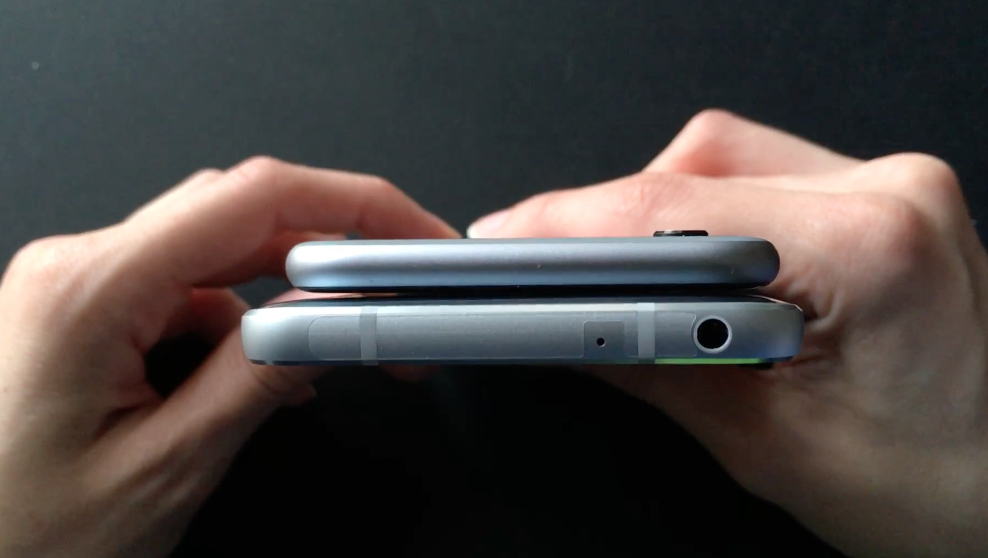

Performance
Even with an older chipset, the G6 is a zippy phone that should more than manage users’ day-to-day tasks. Even as far as benchmark speeds go, the G6 is impressive.
In late February, PhoneArena compared benchmarks for Google’s Pixel, Apple’s iPhone 7, the Samsung Galaxy S7 edge, the Huawei P10 and an early version of the G6. Here are those results along with the AnTuTu benchmark for the G6 I reviews (running final software) on AT&T’s network.
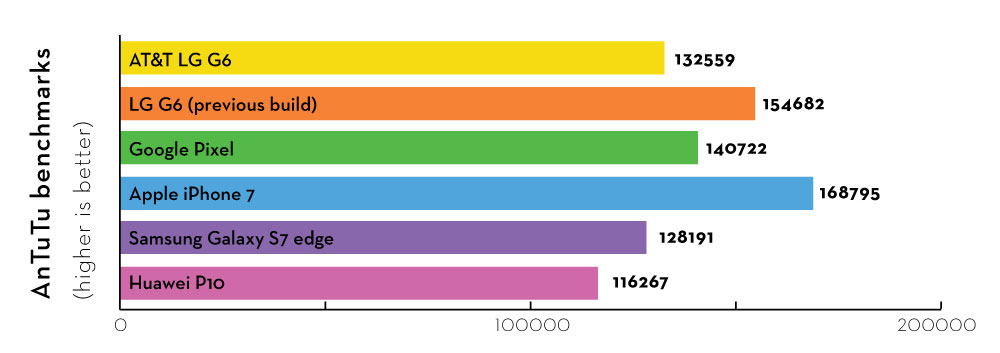
You’ll notice the G6 slowed down a bit from the earlier build, moving farther away from the iPhone to sit behind the Pixel. If the finished G6 had moved behind the Galaxy S7 edge or Huawei P10, there might’ve been room for some concern.
Another positive mark for the G6’s performance is its fingerprint reader. It barely takes a second after placing a finger on the reader for the G6 to unlock and the screen to light up. In fact, it’s so quick, I often found myself accidentally unlocking the phone.
Camera
On last year’s G5, LG was already headed in a good direction when it combined an 8MP wide-angle camera with a 16MP camera to give the phone’s main camera more adaptable shooting. The G6 stayed with the dual-camera approach, this time combining a standard 13MP camera with another 13MP wide-angle camera.
The results are pretty impressive. See for yourself.
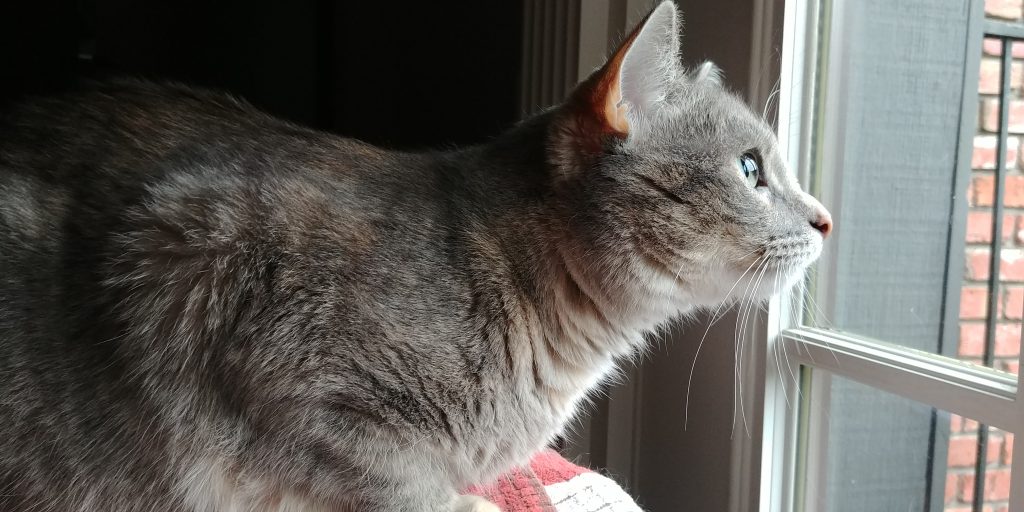


On the G6, you can switch between the standard 13-megapixel camera and the 120-degree wide-angle camera easily depending on which you need to get the best shot.
Standard

Wide-angle

Macro

Panorama
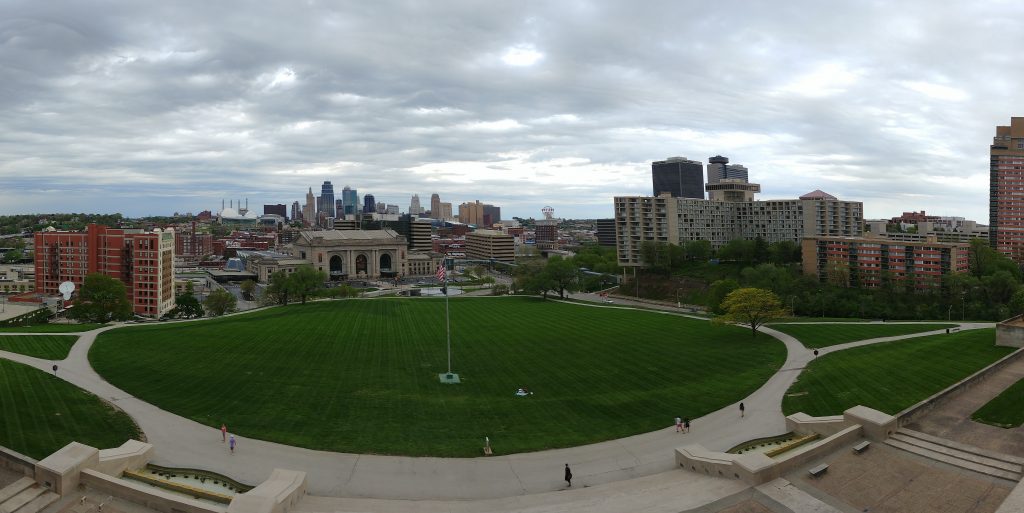
Low-light
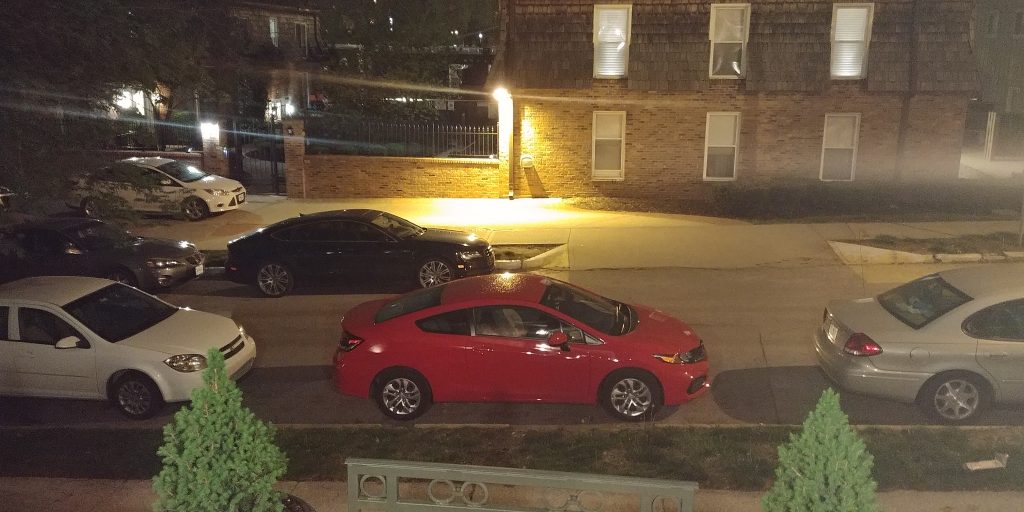
Selfie
The front-facing (secondary) camera is 5MP and takes decent enough photos. (Note: The selfie camera image, below, was cropped to be shorter.)

Problems
There have been some negative reports about the G6’s battery life, but as long as you’re running up-to-date software the non-removable 3300 mAh battery should last through the day. Most days I used the handset, the lowest the battery dropped was 25 to 30 percent. On a day when I used the G6 to track a 40-minute run using GPS while listening to music (via the headphone jack), I ended up needing to re-charge the phone for a short period earlier in the day.
Turning off the phone’s Always On setting for the display and making the screen time-out more quickly can help squeak some more life out of a charge. Luckily, though, the fast and wireless charging on the G6 help make less than stellar battery life more manageable.
While the camera can take some pretty great shots with the right conditions, two areas the camera could improve are low-light and action shots. In low-light, very little detail appears to be picked up and the photos come out grainy. Action pictures tend to have some blurriness, but keeping the phone still by setting it on a sturdy base or post can help minimize the blur.
Some new G6 owners are reporting camera lenses — or more likely the covering over the lenses — scratching easily. The phone I’ve used for a week doesn’t appear to have any such scratches. Regardless, if I decided to make the G6 my main handset, I’d be putting a case on it.
Recommend to a friend?
Yes. The G6’s high-quality camera, water resistance and ability to charge wirelessly will make many LG customers very happy. But — and this is a big but — Samsung’s Galaxy S8 is turning far more heads and the phone’s not due out until April 21. The best thing to do right now would be to wait and get a feel for both LG and Samsung’s new flagships before choosing a device.
Disclaimer: The LG G6 used for this review was loaned to me by AT&T.
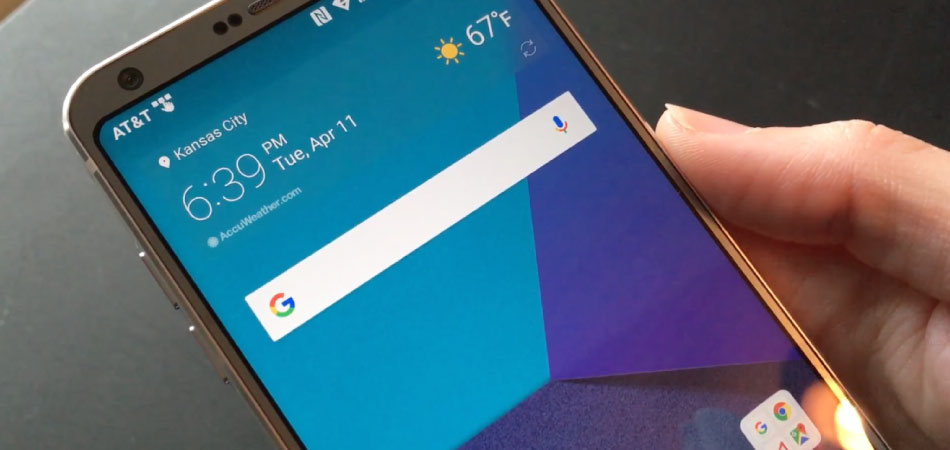

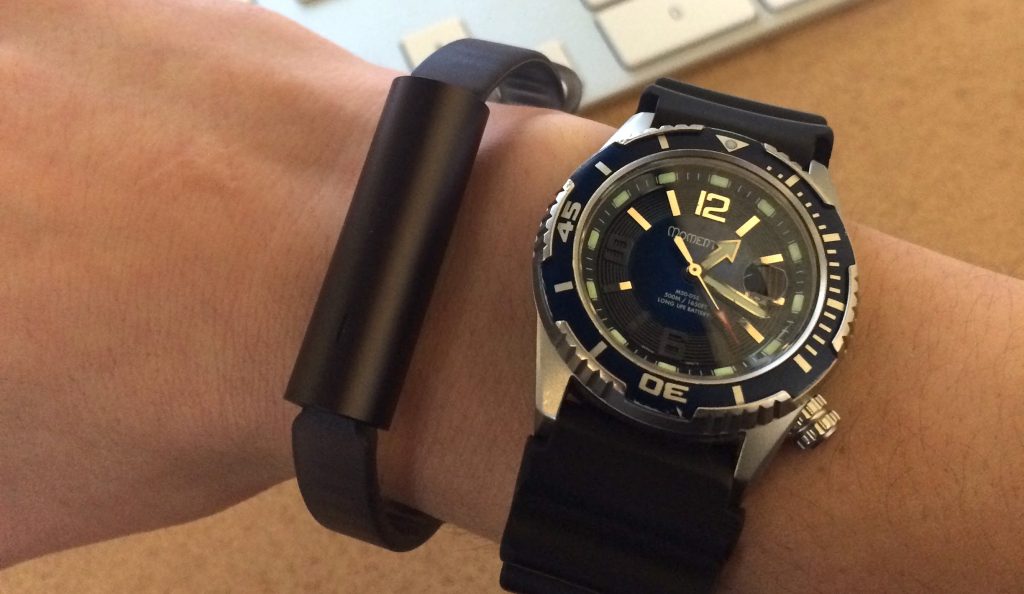

This is a detailed review and I really appreciate the way it has been presented. Thanks! Keep up the good writing.